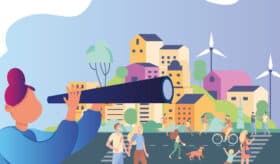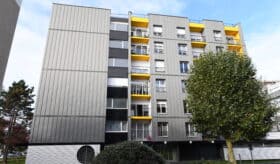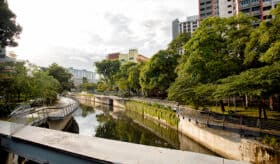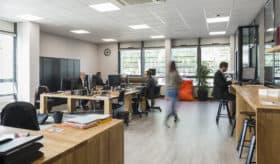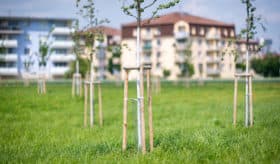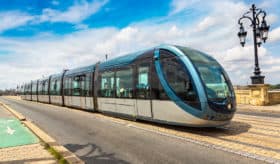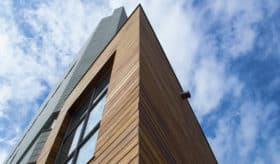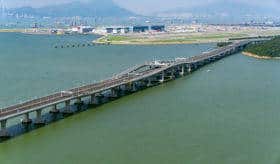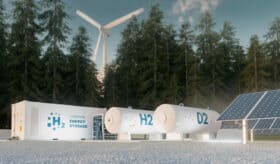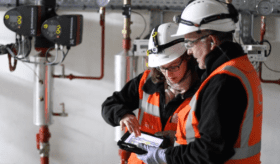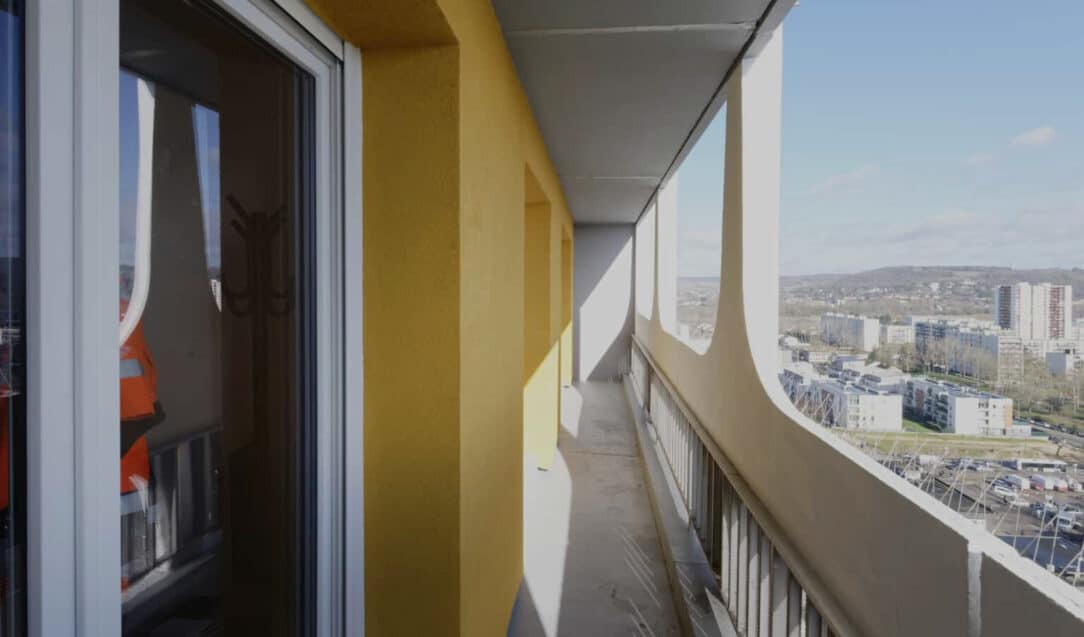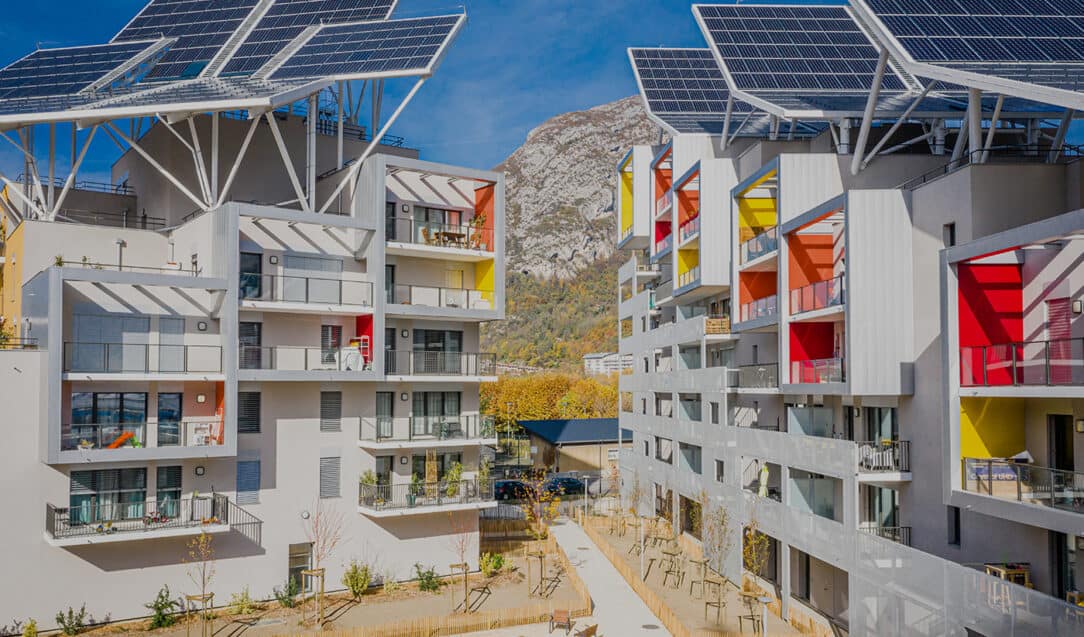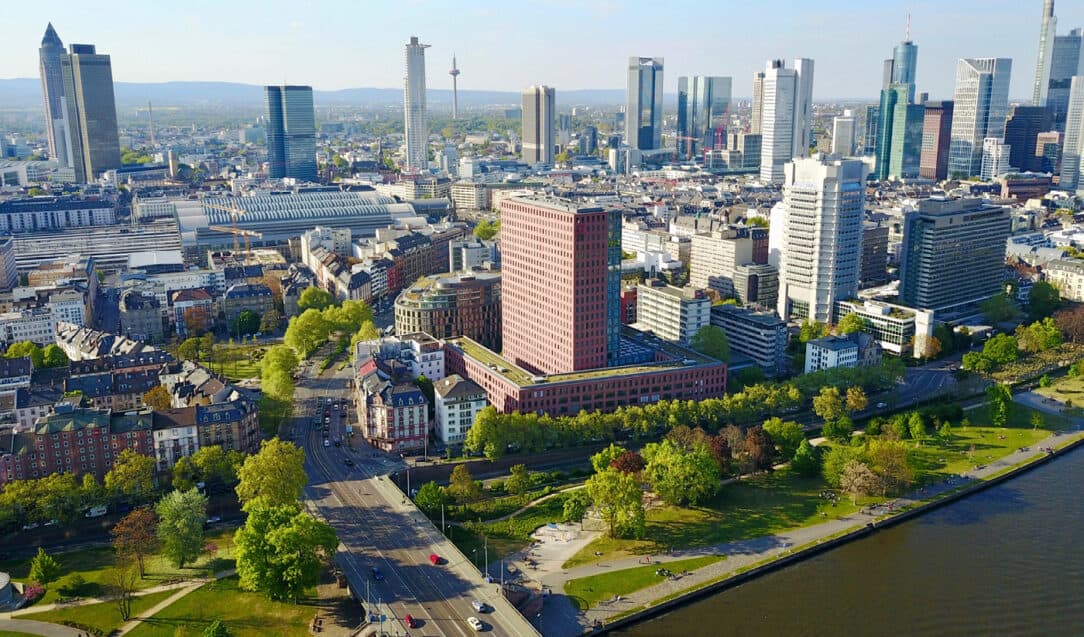Foresight: understanding and responding to future challenges
As a responsible, committed company, Bouygues Construction must be able to quickly adapt to changes in the world and in our society. What is this all about? Anticipating usage to fully respond to both current and future needs and trends: in technology, the environment, demographics, society and the economy. To help in this daily challenge, Bouygues Construction has a team that is dedicated to foresight. But what does foresight mean in concrete terms?
How is regeneration a viable long-term solution?
Regeneration is on the rise, in particular in the context of social housing. All over France, priority neighbourhoods are being revamped. The goal is to provide more comfort to inhabitants while reducing the energy consumption of their homes. This reduction has been challenged by the France Relance plan. The plan requires that social housing reach at least class D in the Energy Performance Diagnosis (DPE, acronym in French) and be awarded at least two labels. With new environmental challenges and new expectations from inhabitants today, the link between regeneration, energy saving and comfort has never been this clear... And not just for social housing!
What will tomorrow’s workplaces look like?
Bouygues Construction’s Foresight team, together with Astrées and Chronos, is conducting a forward-looking study on changes in working methods and their impact on workplaces. How will the offices, housing, third places and mobility spaces of tomorrow be designed, equipped and operated in order to address the needs of new ways of working? To answer this question, we held two multi-partner study workshops, on March 30 and May 27, 2021. We chose to bring together stakeholders from various fields of expertise, who will design and use the workplaces of the future: employers and social partners, promoters, operators, local authorities, digital transformation stakeholders, etc. The questions that arise today are truly central issues in skills covering real estate, human resources, digital tools and environmental responsibility. Let’s bring together the visions of these various stakeholders and devise scenarios for 2030!
Digital technology for convergence between buildings and mobility
Eleven tonnes of CO2 per year: this is the carbon footprint of a household in France. Given that housing and mobility contribute equally to more than half of all greenhouse gas emissions, it is vitally important to combine the efforts of the construction and mobility sectors. Working within the SBA (Smart Buildings Alliance), the R2S 4 Mobility commission, coordinated by Claude Ricaud – a consultant at the GIMELEC consortium of companies in the electro-digital sector – is striving to achieve this goal.
Developing the city with water: managing resources and coping with the risk of flooding
In France, 1 in 4 people and 1 in 3 jobs are exposed to the risk of flooding, through overflowing watercourses or rising sea levels[1]. In more general terms, floods are a major natural hazard in several regions of the world. These risks are now accentuated by climate change and the increase in extreme weather episodes, including intense rain events in particular. In an urban environment, characterised by a strong increase in soil impermeability, these phenomena promote runoff and associated pollution and lead to congestion and flooding. In addition, urbanisation in flood-prone areas is a major economic and social issue for local communities. To meet these challenges, new approaches are being developed to provide better ways of living with water in cities.
Under what circumstances can digital technology improve resilience at local level?
When applied to local communities, the term “resilience” refers to the ability to function independently of disturbances, whether they are sudden and sudden shocks (e.g. flood, riot, terrorist attack) or chronic stresses creating continuous pressure (e.g. air pollution, ageing infrastructure, antisocial behaviour). While digital technology undoubtedly has a role to play in improving resilience at local level, it also carries vulnerabilities. In what situations can there be a positive relationship between the benefits linked to the use of digital technology, and the environmental impacts and vulnerabilities it causes?
Does today’s housing meet the needs of its occupants?
The pandemic and repeated lockdowns have unwittingly reminded us of the importance of quality housing for men, women and children as well as for family life. In 2020, when the home became a place where everyone lived, worked, rested and did leisure activities, no home could skimp on comfort and adaptation. The reality of living within four walls allowed us all to take stock of our real expectations in terms of our living environment and housing. As a result, one and a half years after the first lockdown, do French people have the same expectations as before? Here’s the answer!
The city as seen by 15 to 25-year-olds
In February 2021, we surveyed 1,000 young people aged 15 to 25 about their relationship with the city. The responses, collected by Jam via the JAM chatbot on Messenger, are packed with findings!
When cities overheat
Urban overheating is becoming a recurring phenomenon, resulting from the cumulative effect of climate change and the Urban Heat Island (UHI) phenomenon. Climate change is leading to an increase in the intensity and duration of heat waves (hot air masses causing high temperatures for several consecutive days) in different parts of the world. These meteorological phenomena themselves reinforce the UHI, a climatic effect causing a difference in temperature between the centre of urban areas and outlying or natural areas, which can be greater than 10 °C during heat waves. The effect is even more pronounced at night, when the heat stored by artificialised land and buildings is released into the air, keeping the temperature high. Faced with the various consequences (social, environmental, economic) and climate projections, local and regional authorities are now faced with the need to adapt their cities in order to combat this phenomenon. Below is an overview of the challenges and solutions.
The construction site office of the future
Interview with Stéphane Schaeffer, Planning Manager and head of lean deployment, BYMARO.
Let’s imagine tomorrow’s buildings together
The collective foresight approach “Let’s imagine tomorrow’s buildings together”, initiated by the Scientific and Technical Centre for Building (CSTB) and the French environment and energy conservation agency (ADEME), aims to prepare for the future of buildings in France by 2050 by sharing the different visions of construction and real estate players. Bouygues Construction is one of the partners in this open and collaborative approach that aims to plan ahead for the future of our buildings.
Sustainable construction – a return to straw?
Straw is increasingly becoming a part of the construction sector due to its low cost and great insulating properties. This return to basics is also driven by a desire to build in a more environmentally friendly way. This renewable insulating material has a lot going for it, including being a better circular economy solution and having a low carbon footprint, even though it requires some guidance in and care over its use.
Urban agriculture: what economic model?
Under lockdowns, many French people started to cultivate their own garden, including in cities or on the outskirts of cities, confirming the success of certain forms of urban agriculture. Major cities are becoming visibly greener, but does urban agriculture have an economic model that will ensure it has a stable future?
What paradigm for Green Cities?
In June 2020, eight major French cities saw their municipal councils taken or held by a Green majority: Lyon, Strasbourg, Bordeaux, Grenoble, Tours, Annecy, Besançon and Poitiers. What do these green municipalities plan for the territories?
Strategies for resilient real estate: interview with Camille Gautier, innovation leader at Elan
Without denying the ostensibly anxiety-provoking prospects anticipated by scientists, it proposes keys to designing a liveable and desirable future: knowing and reducing one’s vulnerabilities, learning to react to unknown phenomena, applying principles of continuity, redundancy and sobriety. How can we implement this concept and develop a methodical and operational resilience strategy at the scale of real estate projects? Insights from Camille Gautier, Innovation Leader at Elan.
What is the future for public transport?
From Hyperloop to drone taxis, spectacular technological transport projects are flourishing. But what about the reality of future public transport for everyday life after the Covid crisis?
Dismantlability, for a circular economy in construction
Applying the principles of the circular economy to the city, circular urbanism advocates a change of approach to build the city on itself and make better use of existing assets and resources in the process of urban design. This is a matter of urgency in the context of climate change, resource scarcity and the critical fragility of the ecosystems from which the materials are taken. According to Sylvain Grisot, author of a manifesto on the subject, recycling spaces, transforming the existing while avoiding deconstruction, and intensifying the uses of spaces are the three golden rules to adopt in order to radically change our methods. Among the many possible tools, let’s explore the dismantlability of buildings: what is a dismantlable building, how should it be designed and for what purpose?
Can solar panels meet the carbon challenge?
To combat global warming, France has committed to becoming carbon neutral by 2050. Like France, many countries around the world have decided - by choice or environmental necessity - to turn to decarbonised electricity. In this quest for green energy, photovoltaics seems to have its full place, but is not the only viable solution. Incidentally, what is the status of its deployment potential?
Disability: What are the foundations of disability inclusion at work?
In 2021, disability inclusion is about much more than simply hiring people with disabilities. That's because there are lots of different kinds of disabilities, most of which are invisible. There are also a great many issues involved: performance, recruitment, employee loyalty. Realising this, companies are reviewing their standards and taking internal measures accordingly.

